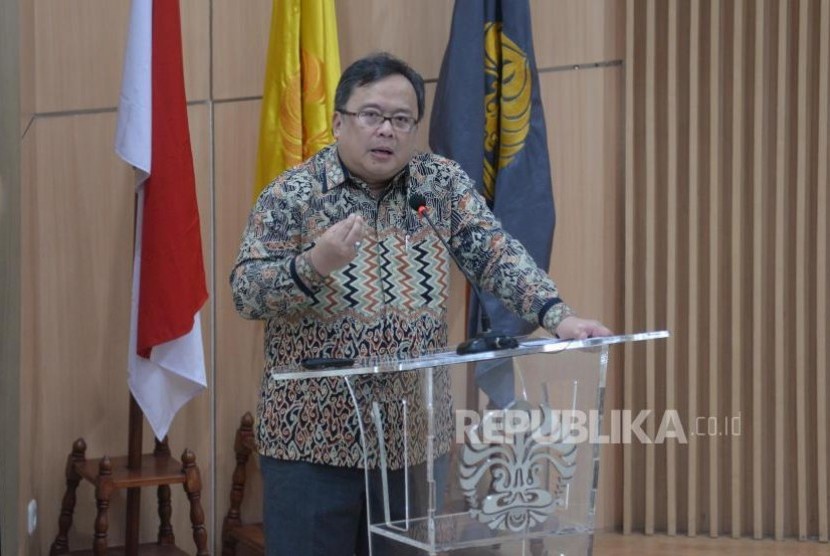REPUBLIKA.CO.ID, JAKARTA -- National Development Planning Agency (Bappenas) head, Bambang S. Brodjonegoro, estimated that the economic growth in 2017 will reach 5.1 percent, below the target of 5.2 percent in the 2107 Revised State Budget.
With average economic growth in the last three quarters of 5.03 percent, it is difficult to achieve economic growth of 5.2 percent.
"If you want to catch up in the fourth quarter, it should be relatively high above 5.5 percent," Brodjonegoro stated here on Monday.
He pointed out that the economic growth is continuing its upward trend, supported by high investment and export growth, as well as an improvement in government consumption. However, household consumption has been slowing down slightly.
The Central Statistics Agency (BPS) noted that Indonesia's economy in quarter III-2017 grew to 5.06 percent year-on-year, which was driven by all components.
All components of gross domestic product (GDP) expenditure grew positively. The highest growth is the export of 17.27 percent. The investment shown by Gross Fixed Capital Formation (PMTB) grew 7.11 percent, while the lowest government consumption growth was of 3.46 percent.
He noted that the export, which reached 17.27 percent, is the highest since the second quarter of 2011. Real exports of non-oil and gas grew the highest in the last seven years, namely 20.51 percent.
"The increase in exports was also driven by an increase in service exports, which grew 12.4 percent, which was driven by the tourism sector," he remarked.
Meanwhile, investment growth for the third quarter of 2017 was 7.11 percent, the highest since Q1 / 2013, driven by the growth in investment in machinery and equipment and other equipment, which reached double digits of 15.18 percent and 16.83 percent, respectively. Earlier since 2016, growth in investment in machinery and equipment tended to contract.
"Increased investment in machinery and other equipment indicates a boost in sustainable production activities," he pointed out.
In addition, the growth of building investment also increased by 6.28 percent, which is driven by government infrastructure projects. This is also evident from the increased sales of cement.
Meanwhile, the improved government consumption growth is driven by the realization of central government expenditure in the third quarter of 2017, which is higher than the same period in the previous year.
However, referring to last data, the growth of government consumption is not high enough.
"This means that the realization of Q3 / Q3 expenditure is still not high," he remarked.


